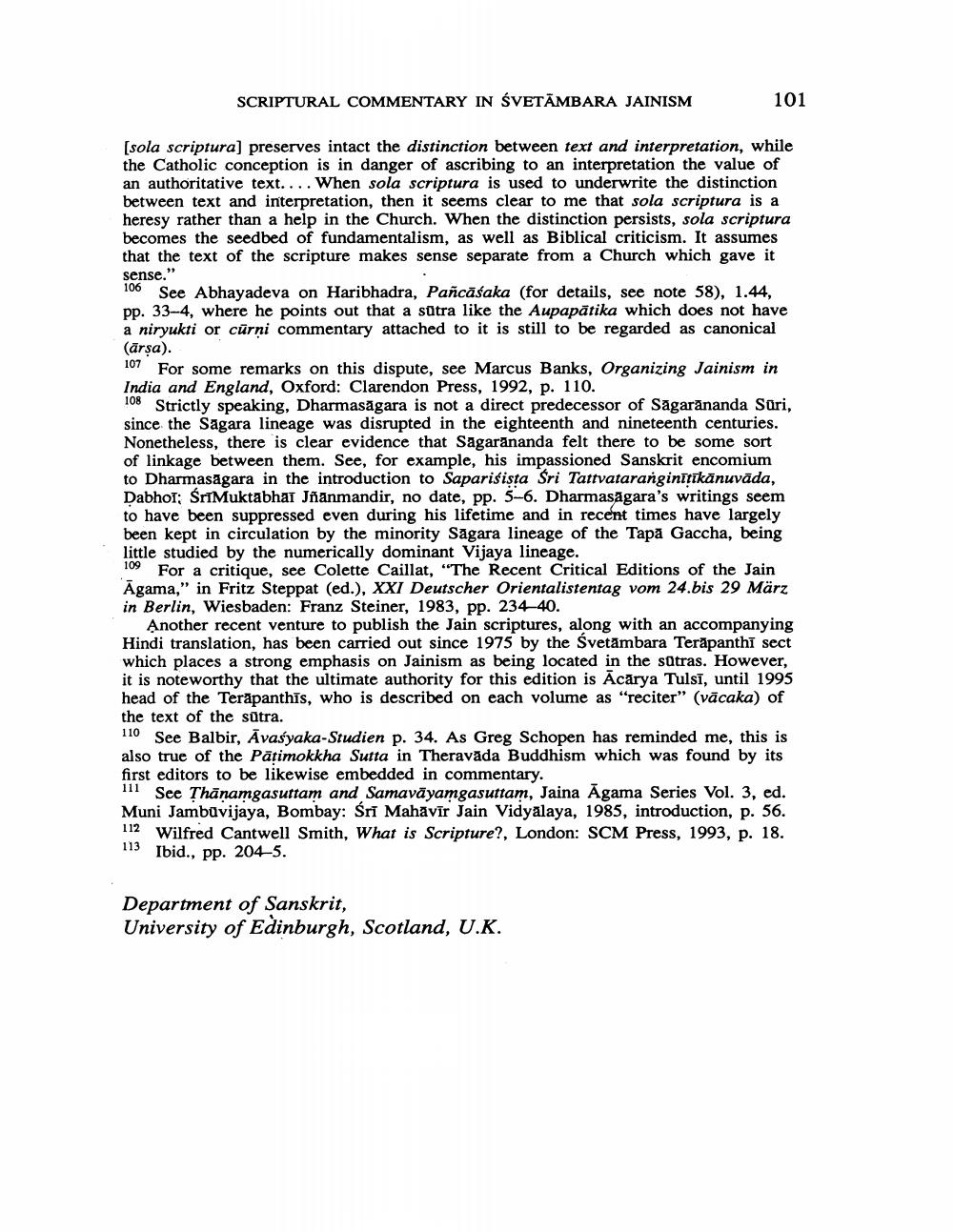________________ SCRIPTURAL COMMENTARY IN SVETAMBARA JAINISM 101 (sola scriptura) preserves intact the distinction between text and interpretation, while the Catholic conception is in danger of ascribing to an interpretation the value of an authoritative text. ... When sola scriptura is used to underwrite the distinction between text and interpretation, then it seems clear to me that sola scriptura is a heresy rather than a help in the Church. When the distinction persists, sola scriptura becomes the seedbed of fundamentalism, as well as Biblical criticism. It assumes that the text of the scripture makes sense separate from a Church which gave it sense." 106 See Abhayadeva on Haribhadra, Pancasaka (for details, see note 58), 1.44, pp. 33-4, where he points out that a sutra like the Aupapatika which does not have a niryukti or curni commentary attached to it is still to be regarded as canonical (arsa). 107 For some remarks on this dispute, see Marcus Banks, Organizing Jainism in India and England, Oxford: Clarendon Press, 1992, p. 110. 108 Strictly speaking, Dharmasagara is not a direct predecessor of Sagarananda Suri, since the Sagara lineage was disrupted in the eighteenth and nineteenth centuries. Nonetheless, there is clear evidence that Sagarananda felt there to be some sort of linkage between them. See, for example, his impassioned Sanskrit encomium to Dharmasagara in the introduction to Saparisista Sri Tattvataranginitikanuvada, Dabhos: Sri Muktabhai Jnanmandir, no date, pp. 5-6. Dharmasagara's writings seem to have been suppressed even during his lifetime and in recent times have largely been kept in circulation by the minority Sagara lineage of the Tapa Gaccha, being little studied by the numerically dominant Vijaya lineage. 109 For a critique, see Colette Caillat, "The Recent Critical Editions of the Jain Agama," in Fritz Steppat (ed.), XXI Deutscher Orientalistentag vom 24.bis 29 Marz in Berlin, Wiesbaden: Franz Steiner, 1983, pp. 234_40. Another recent venture to publish the Jain scriptures, along with an accompanying Hindi translation, has been carried out since 1975 by the Svetambara Terapanthi sect which places a strong emphasis on Jainism as being located in the sutras. However, it is noteworthy that the ultimate authority for this edition is Acarya Tulsi, until 1995 head of the Terapanthis, who is described on each volume as "reciter" (vacaka) of the text of the sutra. 110 See Balbir, Avasiyaka-Studien p. 34. As Greg Schopen has reminded me, this is also true of the Patimokkha Sutta in Theravada Buddhism which was found by its first editors to be likewise embedded in commentary. ml See Thanamgasuttam and Samavayamgasuttam, Jaina Agama Series Vol. 3, ed. Muni Jambuvijaya, Bombay: Sri Mahavir Jain Vidyalaya, 1985, introduction, p. 56. 112 Wilfred Cantwell Smith, What is Scripture?, London: SCM Press, 1993, p. 18. 113 Ibid., pp. 204-5. Department of Sanskrit, University of Edinburgh, Scotland, U.K.




